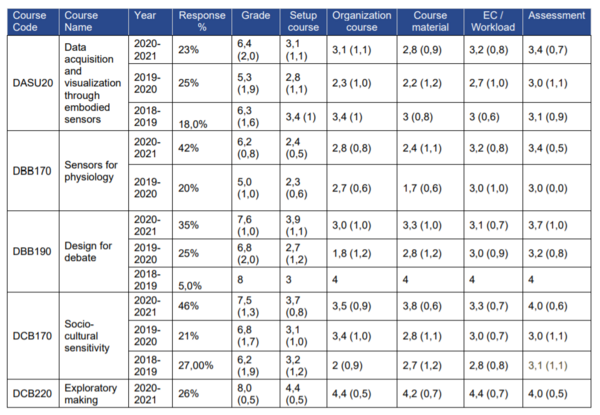The results of the Q2 evaluations were provided to the teachers and have been discussed with the Director of Education and the Program Committee. In general the evaluation outcomes are positive.
Bachelor's Program
- Courses: 12 bachelor level courses were offered in Q2, and the squads from Q1-Q2 (SemA) were also evaluated.
- Response: The response rate of the evaluations was generally sufficient but will not be considered this quartile as not all eligible students were considered. This was due to a system malfunction that is now identified and will not be happening again.
- Overall grade: The courses and squads were appreciated, with overall grades between 6 and 8,5 (overall grades are evaluated on a on a 0.0 to 10.0 scale).
- Lecturers: Students are in general satisfied with the lecturers with most lecturers having excellent evaluations of 4,0 or more (on a scale from 0.0 to 5.0).
- Focus for improvement: The aspects to work on were mainly level and workload. The workload especially seems to be different, or perhaps seems to have increased, with remote or hybrid classes. This is reflected in the squad results as well.

Master's Program
- Courses: 6 master level courses were offered in Q2 with the involvement of 12 instructors.
- Response: The response rate of the evaluations varied between 20 % and 50%.
- Overall grade: The overall course grades varied between 6,5 and 8,3 (overall grades are evaluated on a on a 0.0 to 10.0 scale).
- Students were very satisfied with the lecturers, with 7 out of 12 receiving an excellent evaluation (on a scale from 0.0 to 5.0).
- Focus for improvement: The workload of all the courses in general were perceived as high (on a scale from 0-5 where 3 is the ideal level) and the course material was not optimal (maybe still because of remote and hybrid teaching due to Corona).

Improvement plan
When looking at the evaluation outcomes of the bachelor and master courses in quarter 2, we see opportunities for improvement. In general students are satisfied with the courses and lecturers but there is room for improvement in the setup of some courses and course materials available. This situation is of course also due, in part, to having to still teach remotely or in hybrid settings. The results of the evaluations are discussed in the Education Councils and with a delegation of the Program Committee. Talks have been arranged by the teacher support to help discus some course set up and gain the lecturer’s perspectives. We are sharing the comparative overviews of the courses to also see the progression and improvement over the last few years.